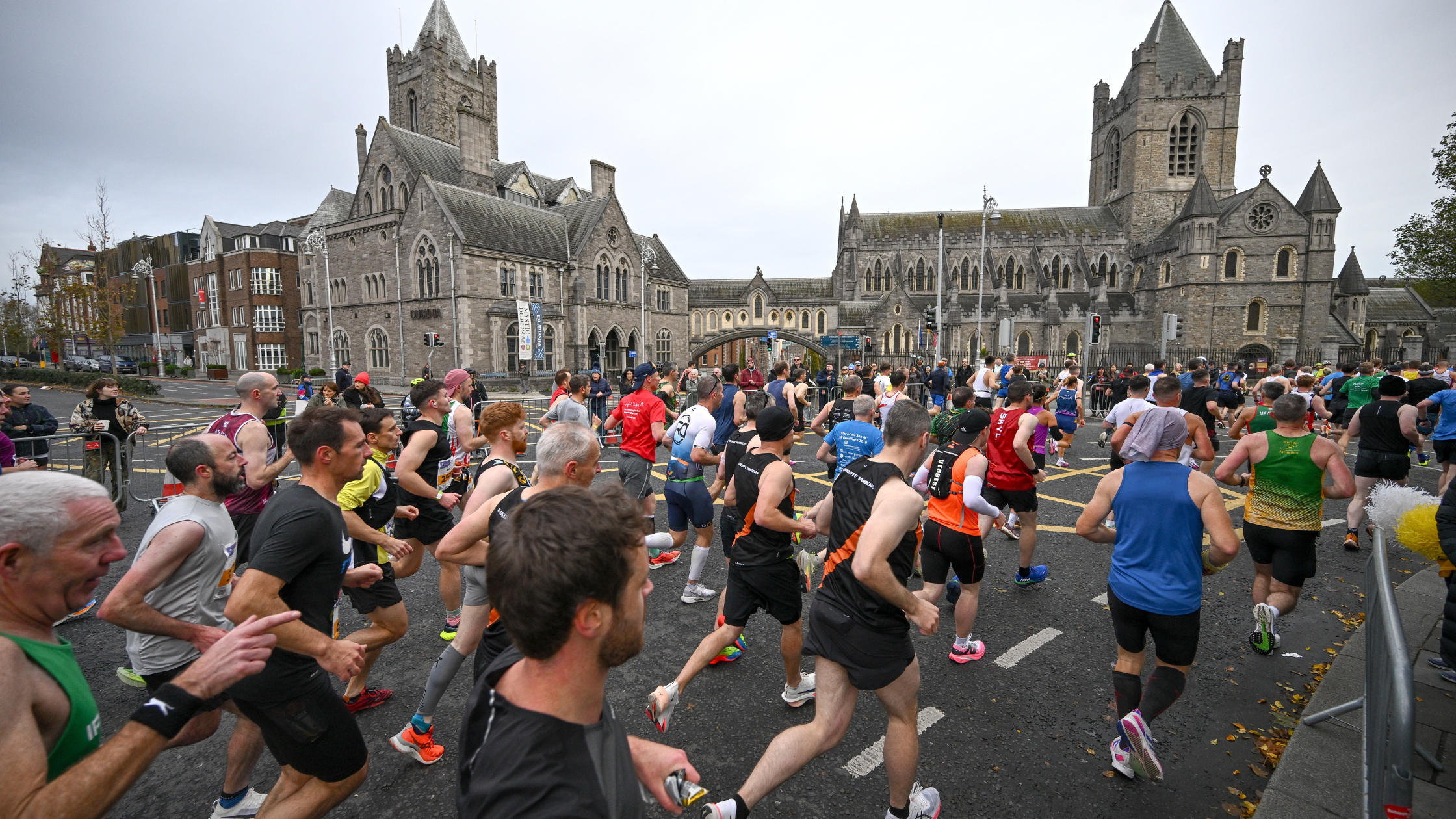Want some tips on looking after your running body? Check out this advice that will help keep you injury free and keep you running.
You’re a runner – so your training is predominantly running – yes? Specific training for a specific activity is the best form of training; after all, you wouldn’t expect to become a good golfer if you rarely ventured onto the fairways. However, being able to run injury free week-in, week-out and ensure that you’re getting the best out of your training requires more than just running. It requires attention to many other areas to maintain strength, flexibility and ward off those dreaded injuries.
So if you want to 'run free' without problems, follow these tips and you will soon be well on the way to enjoyable, long term, injury-free running training.
1. Running footwear
Our top tip has to be to invest in correct footwear.
Tennis shoes with minimal cushioning are definitely a no-no but equally, replacing your running shoes once a millennium is off the agenda too. Good quality, well fitting, functional running shoes are a must and if you only make one investment in running equipment, this one is essential. Depending on your weight and the shoe, modern running shoes will last from 300 to 800 miles (approx 500km to 800km) and will protect your feet, skeleton and muscles. When purchasing, always visit a specialist running retailer who will advise you and allow you to test them before you buy.
2. Stretch your muscles
Regular flexibility training is one sure-fire way to ward off muscle pulls and strains. The repetitive nature of running causes muscles to shorten and tighten – which flexibility training will prevent. Ideally, stretch all the major leg muscles after every session but if that proves too time consuming, focus on 10 minutes quality stretching twice a week after your run. Think of it as training that will enhance your running and keep you running long-term, rather than a chore that is taking up valuable running time.
3. Get a sports massage
Probably one of the most underrated tools available to runners is using the services of a good sports masseur – regularly. Running causes micro damage to the muscles which if left untreated, can eventually result in a build-up of scar tissue and injury. Factor in the stresses of racing and the problem is compounded. It’s no coincidence that professional runners will spend many hours on the sports massage couch as part of their program to keep the body in peak condition. After a race or every couple of months, treat yourself to a full leg massage, which will flush away toxins, realign muscle fibres and help ensure that you can continue running week-in, week-out.
4. Build up your running sensibly
The runner’s mind is a funny thing; it tricks us to thinking that we’re fitter than we are. If you’ve had a lay-off due to illness, injury, a holiday or other commitments, it’s tempting to jump straight back into your training, exactly where you left off. That is a recipe for breakdown. Instead, gradually introduce your body to regular running, using ‘the 10 per cent rule’ as a guide, where you increase your weekly mileage by no more than 10 per cent each week. Similarly when building up to a race, avoid the temptation to pile on the miles early on in the schedule, which again can lead to illness or injury.
5. Race sparingly
For many runners, racing is their raison d’etre – the sole reason that they run at all. For others, races serve as an ideal focus point for their training miles. Whichever category you fall into, racing too often will result in staleness, injury or illness. Races are far more demanding than training runs; the adrenaline flows, your competitive instincts take over and you strive for a particular time or to beat a rival. All good stuff – but it is important to remember that this extra effort takes more out of you than training, both physically and mentally, so limit your races to a select few and to avoid breakdown.
6. Invest in a heart rate monitor (HRM)
Arguably the best training tool around, a heart rate monitor is basically a personal coach on your wrist. Entry level models are now as cheap as a stopwatch and even more technical models are affordable. A HRM will give you more value out of your training, ensuring that you don’t overtrain by trying to blitz every session and that you train at the right intensity for each workout.
7. Incorporate resistance training
Resistance training is extremely important to build all-round strength and hence protect against injuries.
Rather than turn you into a muscle-bound heavyweight, correct training with weights will make you stronger, improve your posture and enhance your running economy – how efficiently you run. One or two all over body sessions a week will significantly improve your overall strength and far from detracting from your running performance, will ensure that you get to the finish line in one piece – and maybe even out-sprint that club rival!
8. Don’t forget your core running training
Core training – exercises that work your deep postural muscles in your abdomen will make you a stronger and more efficient runner. Your core muscles are the chassis that supports the rest of your body and so a weak chassis means a weak body. Literally just a few minutes a week spent exercising with a stability ball or with static core exercises will bring genuine injury prevention, strength and efficiency benefits that you will notice in training and racing.
9. Hydrate
A challenge for many people; keeping fully hydrated is even more important for runners. In addition to fatigue, nausea and headaches, fluid losses through sweating will result in impaired performances in training and racing due to reduced blood volume and dehydrated muscles. Drink frequently throughout the day, focusing on natural, non-caffeinated drinks such as fruit juices and water and you will flush toxins out, perform and feel better.
10. Don’t neglect protein in your diet
Commonly thought of as the bodybuilders’ food of choice, protein is extremely important for runners as well. Every foot-strike damages blood cells and the repair necessary after training can be as high as that of a bodybuilder. Additionally, for long distance specialists such as marathoners, long training runs can strip protein out of the body for use as fuel, so it is vital to replace it on a daily basis. Try and consume low fat varieties such as lean meat and fish over mince and untrimmed fatty cuts.
Of course running training should mainly be about running, but incorporating other aspects into your weekly schedule will improve and enhance your running performance and no less importantly, your enjoyment. Whatever your goal, a little attention to a few basic details, you will not only get the most out of your training, you will be able to achieve the key aim of every runner – to keep training long-term.














